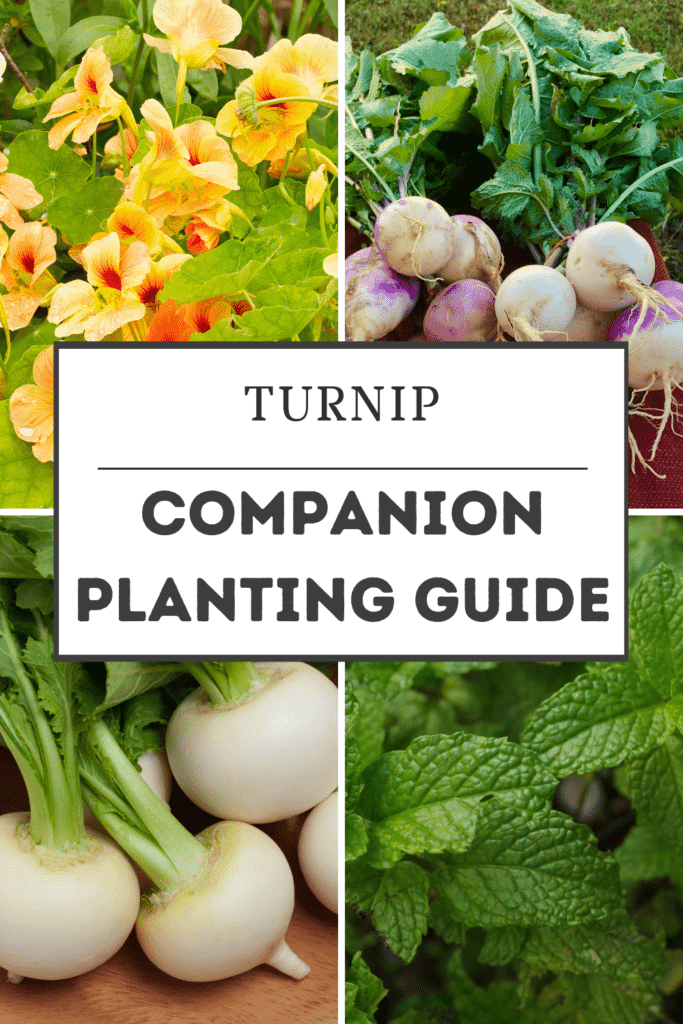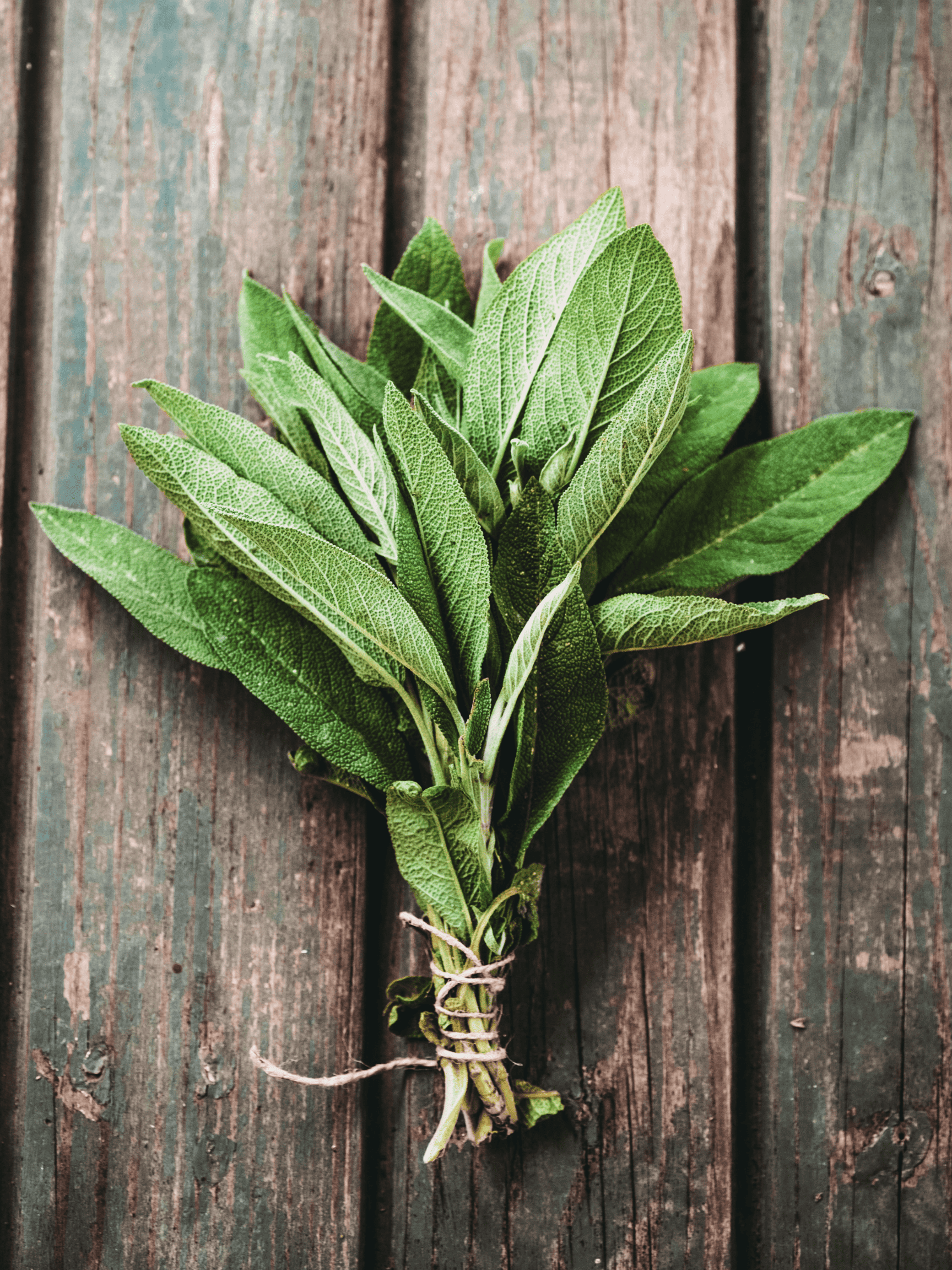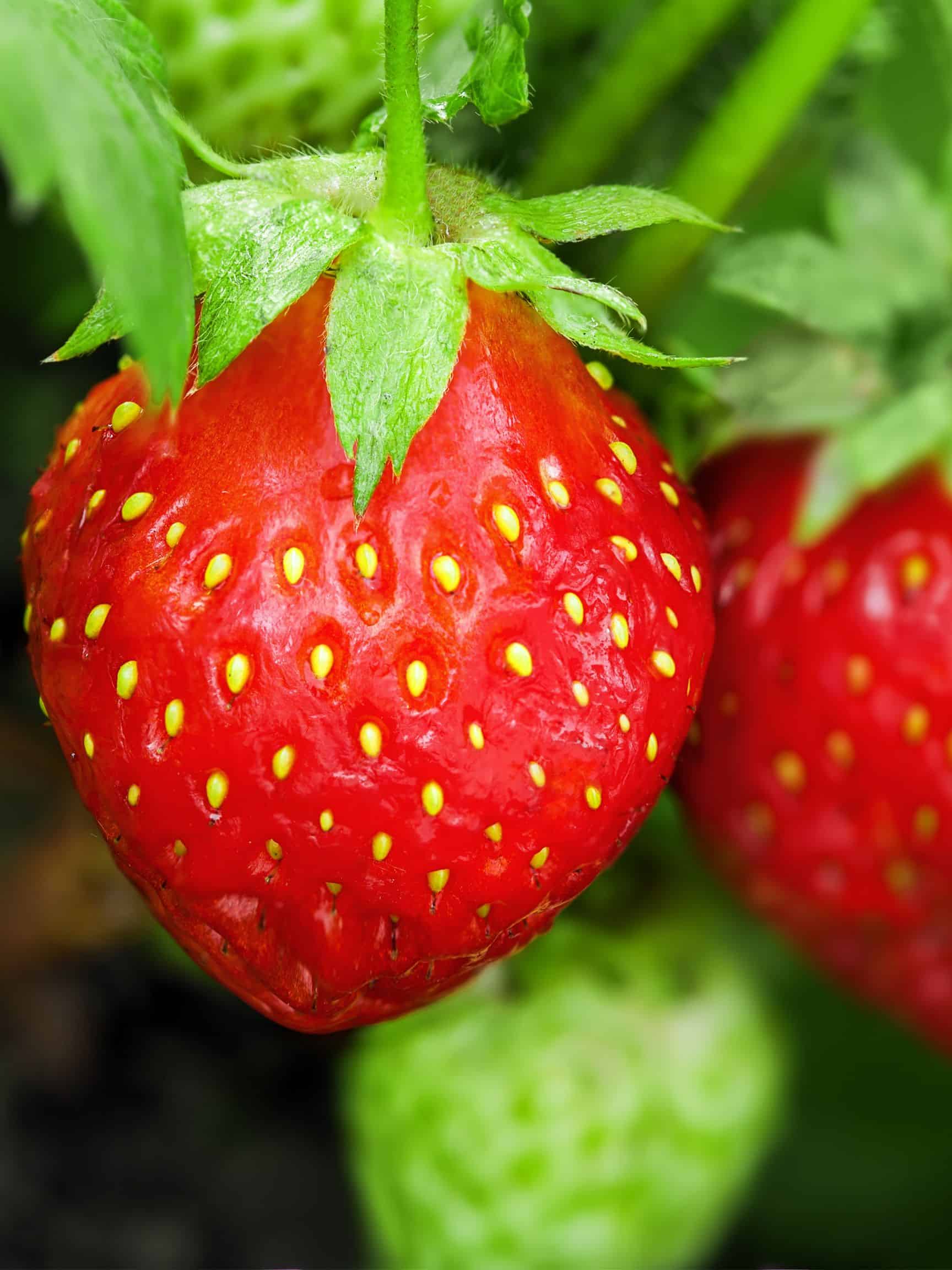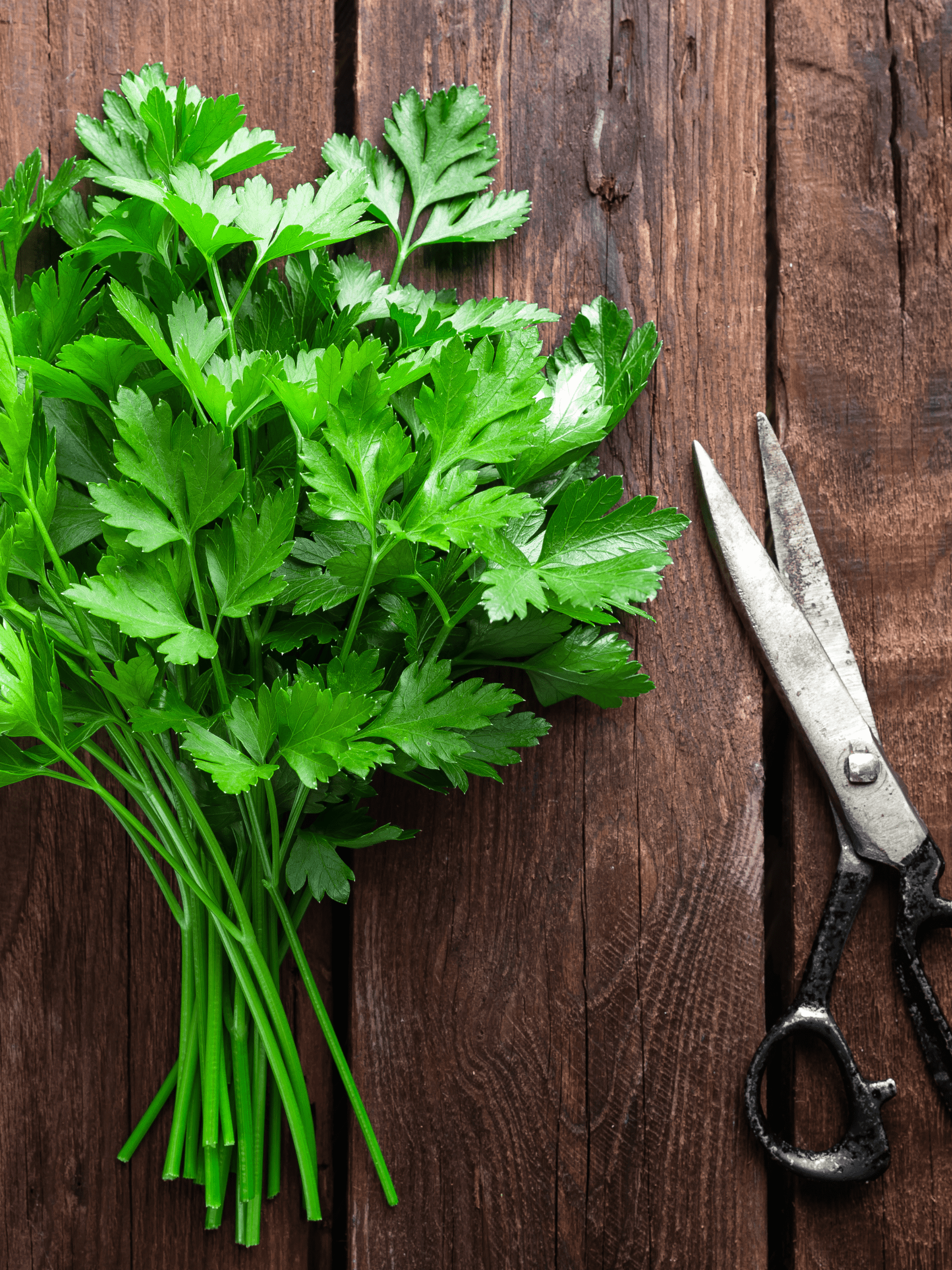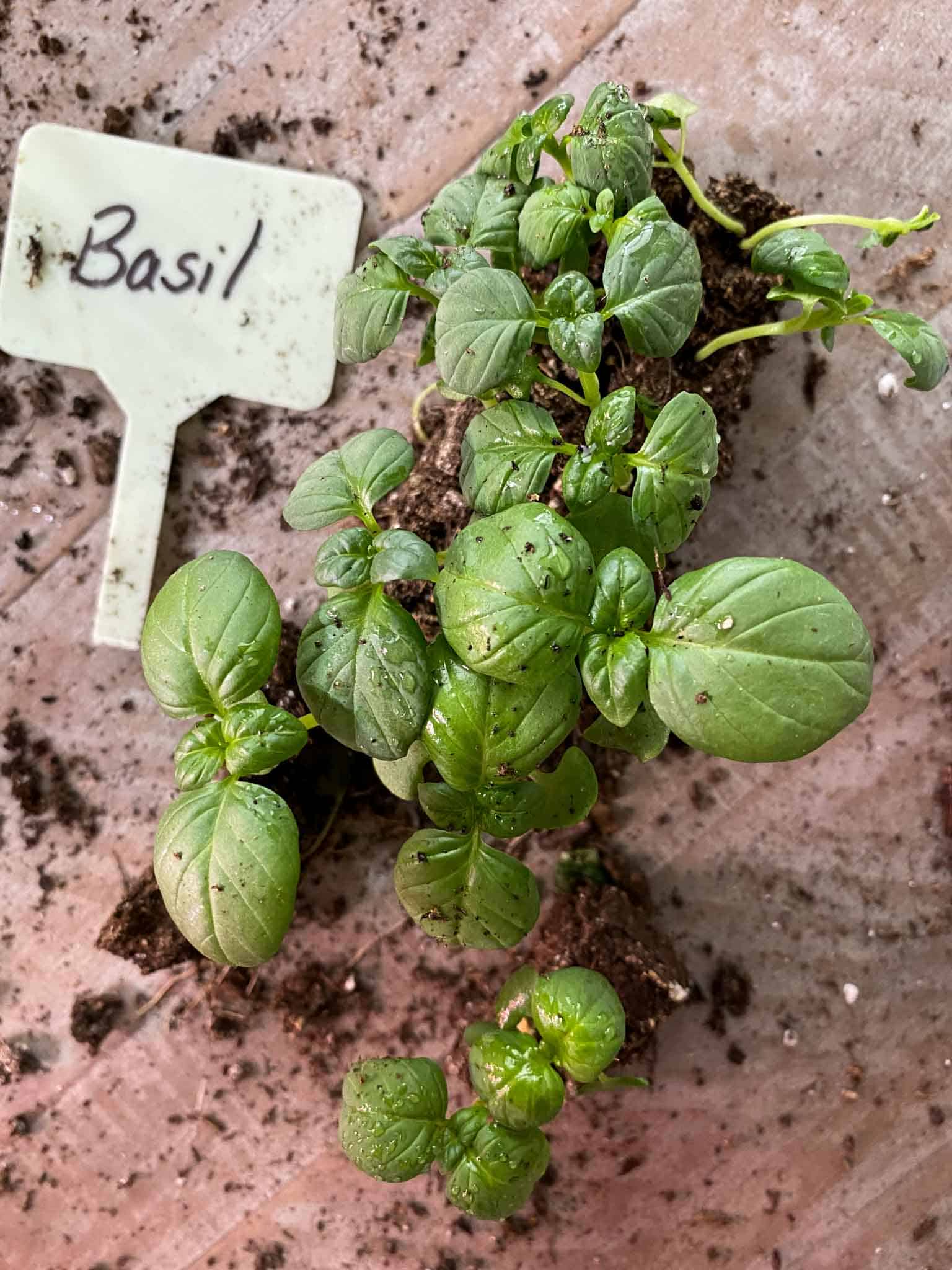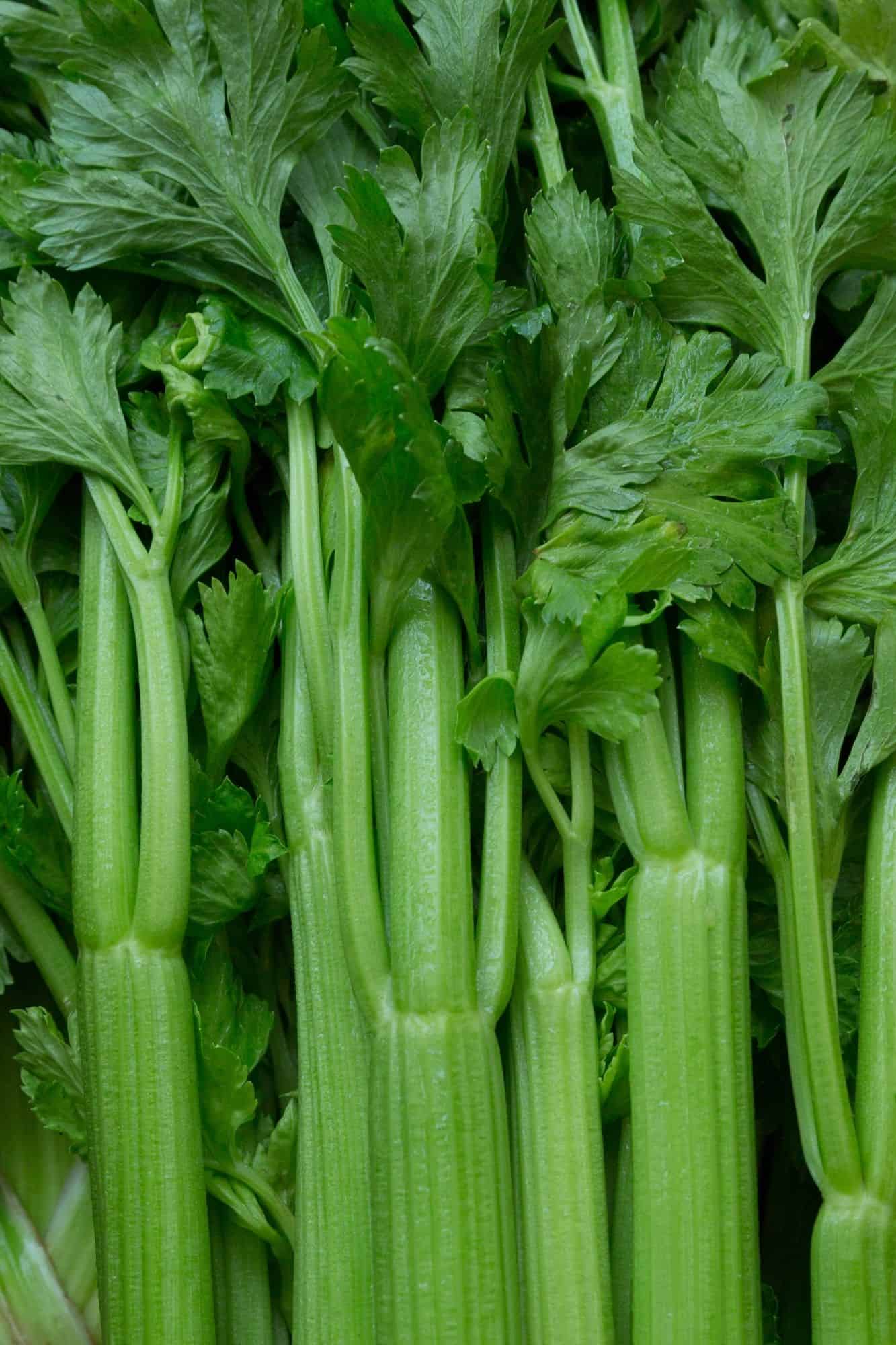Turnip Companion Plants | A Guide for What & What NOT to Plant
Read on to find out exactly what turnip companion plants will work best for you in your vegetable garden or flower bed! This turnip companion planting guide will encourage this root vegetable’s growth, enhance flavor, and will help to deter unwanted pests such as worms. Find out what plants make great companions and what plants make bad companions for turnips (Brassica rapa).
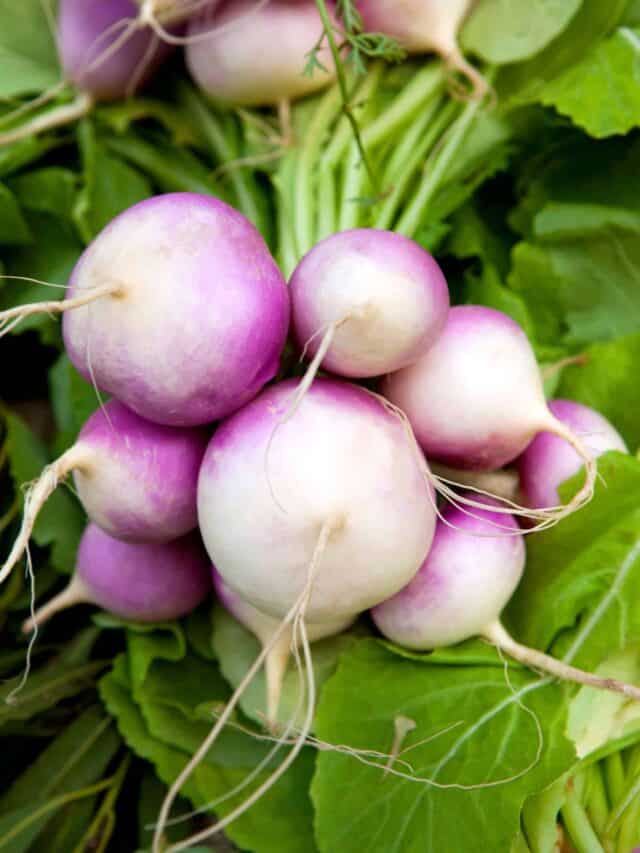
Turnip Companion Plants – A Guide for What & What NOT to Plant
All About Turnips
Turnips are ready in 40-55 days after planting, making them a great crop for succession planting. They require 6-8 hours of full sunlight to thrive. These root vegetables are said to come from Europe and have been cultivated for thousands of years. Turnips are versatile and can be eaten raw or cooked as a stand alone side, or in soups and stews.
Turnips are grown best in USDA growing zones 2-9… although on either end of the spectrum, precautions may need to be taken to protect the plants from both sub zero temperatures and scorching heat. They grow well in loamy soil with sand that has a PH of 6-6.8 and should be spaced at least 1-2 inches apart per plant and 18-30 inches in between rows. There are several varieties of turnips, including white turnips, yellow turnips, and rutabagas, which are a larger, sweeter variety.
When choosing companion plants for turnips, it’s essential to consider their growth habits, nutrient requirements, and pest susceptibility. By taking permaculture concepts into mind and selecting the right companion plants, you can create a healthy and productive garden that will benefit all your plants.
What Is Companion Planting?
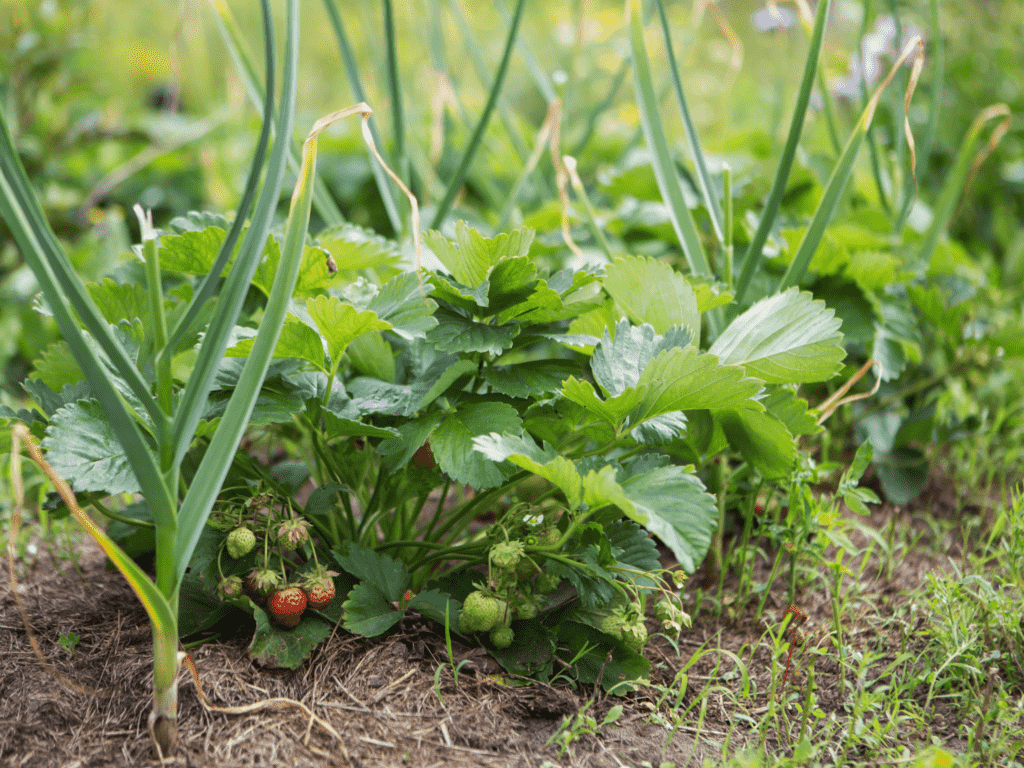
Companion planting is a simple gardening technique that helps to get the most out of your vegetable or flower garden- more specifically your turnips! It involves planting different species of plants close to each other for mutual benefit.
Whether growing large amounts of turnip or smaller patches, it is important to keep companion planting in mind. Companion planting is a tried and true method combining science and traditional lessons handed down over multiple generations to maximize the health and efficiency of your plants.
Gardening with companion planting in mind can help you to encourage nutrient uptake, encourage pollination, deter pests, attract beneficial insects and pollinators and provide shelter or a space to climb. Companion gardening stretches beyond the confines of small-scale conventional gardening to orchards, food forests, trees and shrubs, grains, grasses, and other field crops. If you are aiming for a bumper crop of home-grown turnips, this guide is for you!
What Are The Benefits Of Companion Planting With Turnips?

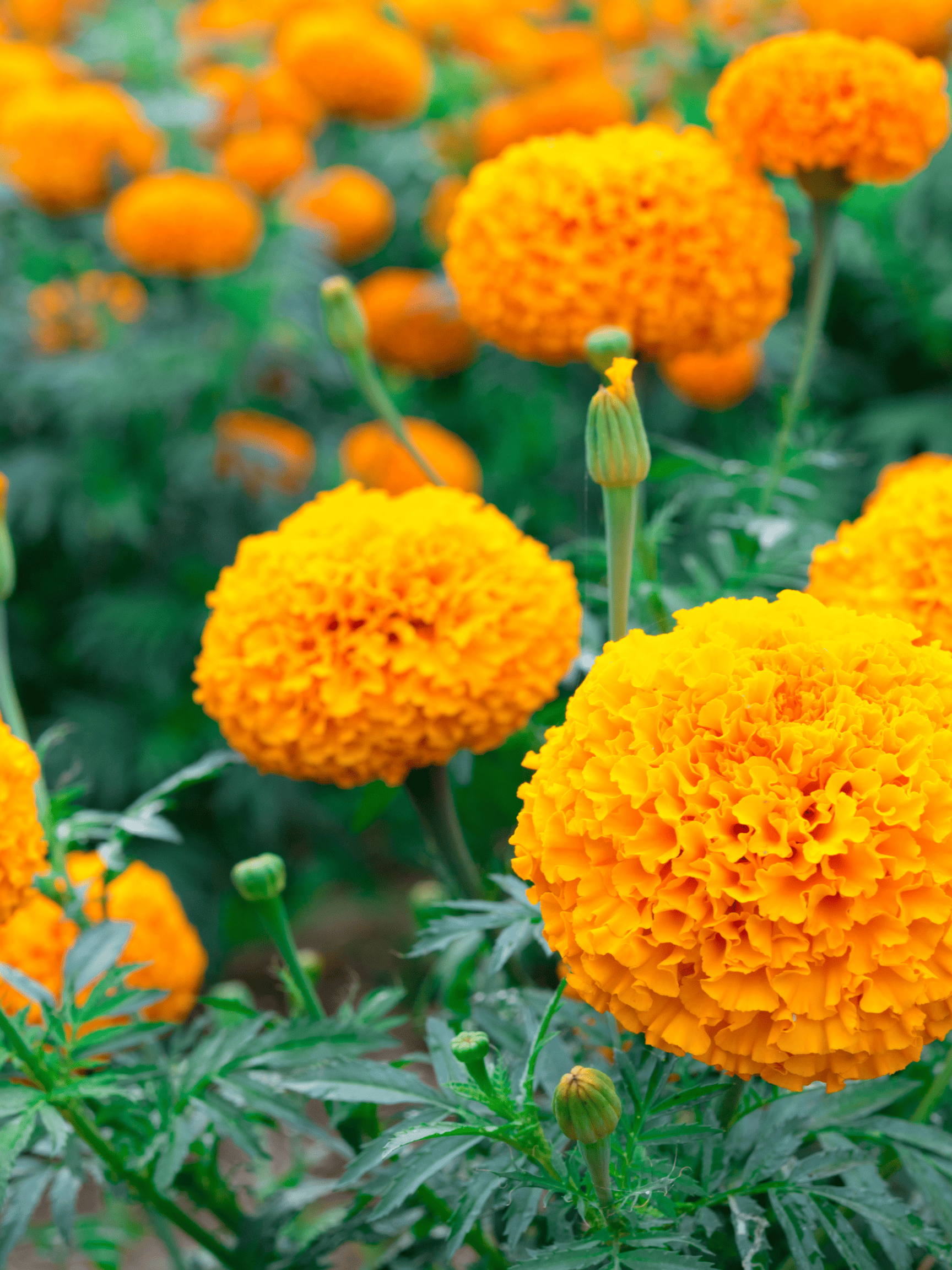
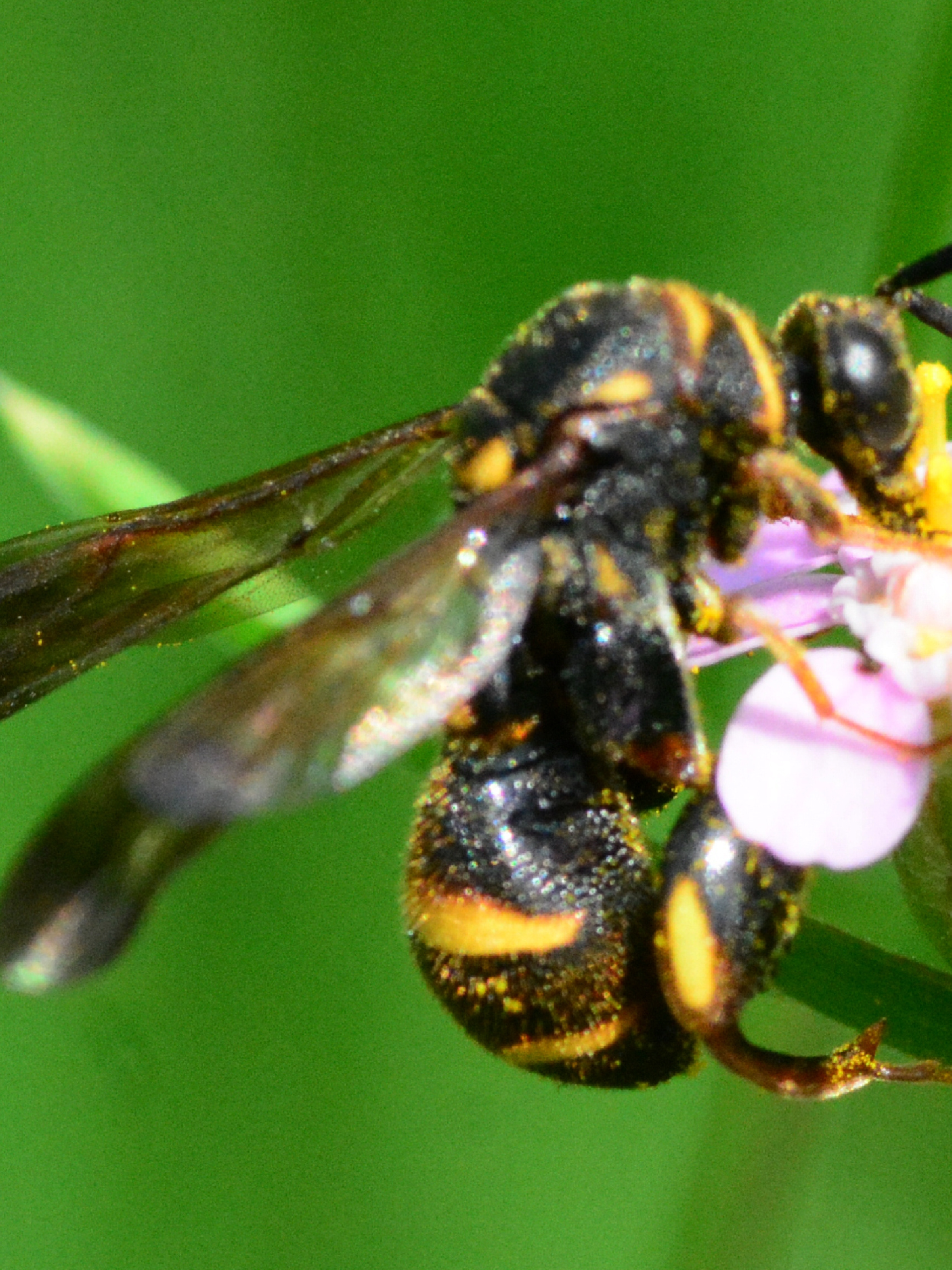
Weed Prevention: Certain crops provide fast growing ground cover that help to suppress surrounding weeds. Try to alternate upright crops with sprawling plants to keep weeds at bay in your garden. Be mindful not to choke out your turnip seedlings in their early stages with sprawling plants like cucumbers. Cucumbers are especially good at providing ground cover for neighbouring plants. Consider planting low lying cover crops like clover around turnip sprouts to help provide protection in the early stages of growth.
Nutrient Provision: An appeal of using a polyculture type of approach and planting different plants next to each other is that the plants wont be competing for the exact same nutrients. Certain plants add needed nutrients into the soil and help neighbouring plants to thrive. Legumes are considered “givers” and include plants like peas, beans, clover and alfalfa. They have deep roots that fix nitrogen into the soil. Planting these next to heavy or light feeders that use up nitrogen will create the perfect growing conditions for your turnip crops to thrive.
Trap Cropping: Placing certain bug-appealing plants near other susceptible plants can help to attract pests away from fragile crops and allow them to feed on others that won’t be harmed or aren’t as important. Planting the trap crop ahead of your target crop will ensure the pests stay away from delicate seedlings. Once the trap crop is infested, you can remove it along with the pests.

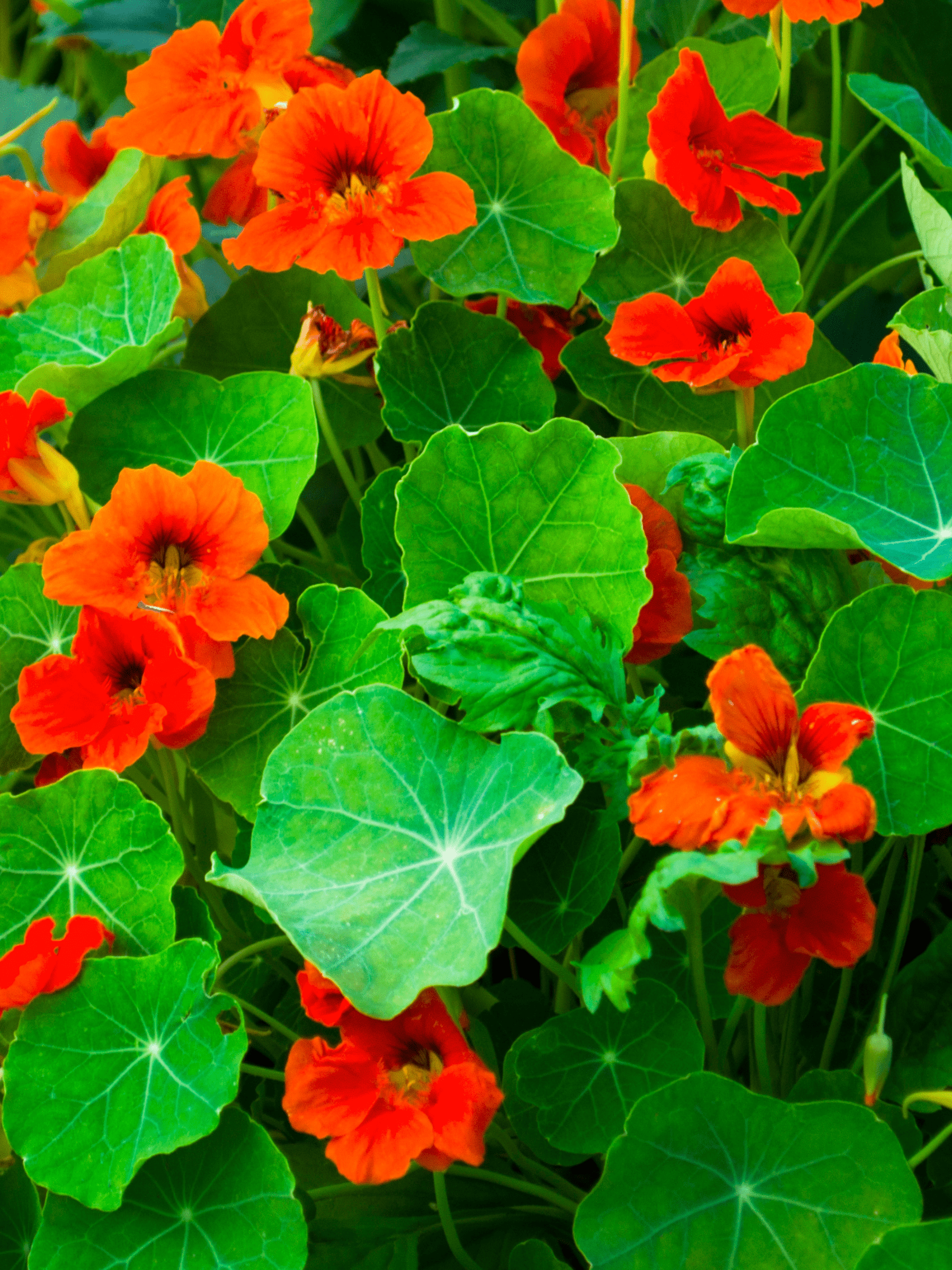
Beneficial Insect Attraction: Certain plants can help to encourage bees, ladybugs, and other beneficial insects to frequent the area. Bright and attractive plants such as Borage attract pollinators and other beneficial predatory insects to neighbouring crops. When thinking of turnip companion plants, consider choosing bright, flowering plants.
Pest Suppression: Mixed scents from different plants can help to repel insects (mostly small, egg laying flies) from laying on neighbouring plants. Certain herbs and flowers can prevent pesky worms, nematodes, repel cucumber beetles, and other fungi. The oil from Marigolds has been proven to be a form of pest control for many different pests.
Protective Shelter: Fragile plants or plants with very specific needs can be benefitted from the shelter that surrounding plants may provide. Companion plants can provide shade, a wind barrier, and a canopy to protect lower plants from rain, hail, and even frost.
Natural Supports: Strong, tall plants such as sunflowers and corn offer trailing plants or low growing plants like peas and cucumbers a strong trellis-like support to climb and spread. Avoid planting these kind of crops next to turnips to avoid large competing root systems and plants that will shade your turnips too much.
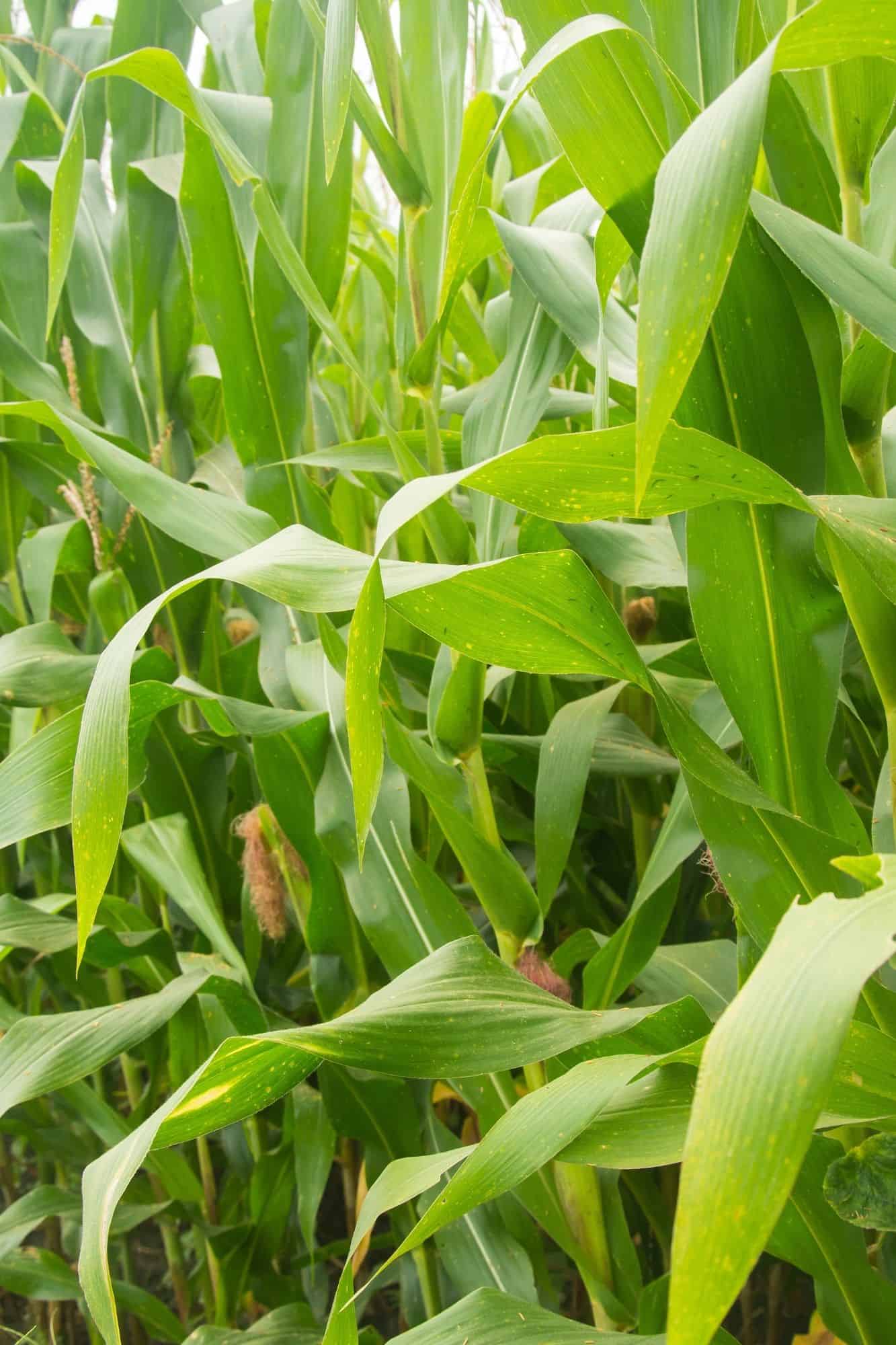
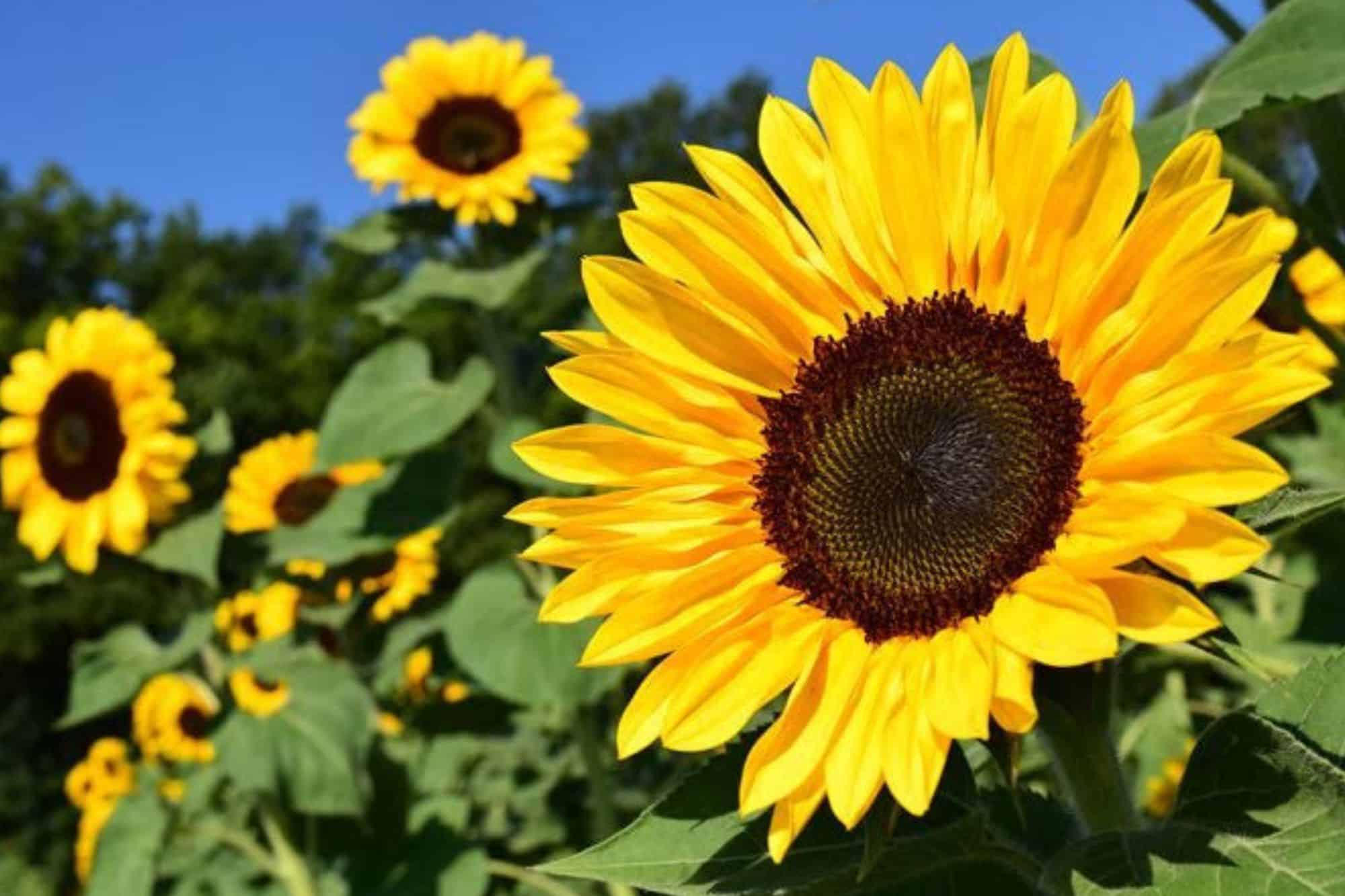
Turnip Companion Plants
Brassicas (with caution): Broccoli, kale, cauliflower and Brussels sprouts all benefit from being planted next to turnips… however, the relationship is one sided. Turnips work as more of a trap crop for aphids and slugs… drawing them away from delicate brassicas and acting as a snack.
Related: Cauliflower Companion Plants

Onions + Garlic– The strong odour of onions and garlic repel spider mites, weevils, spider mites, and the dreaded Japanese beetles.
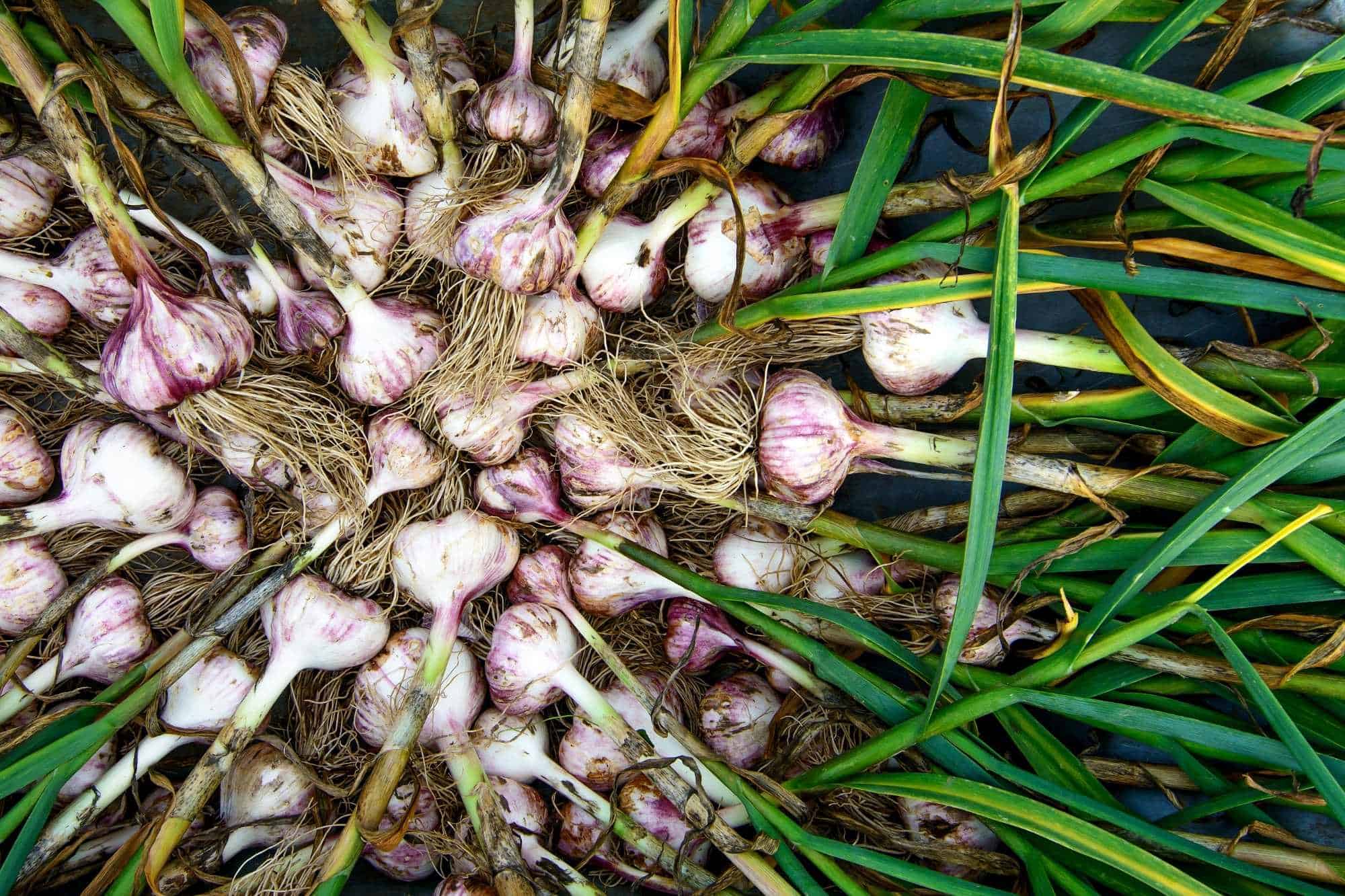
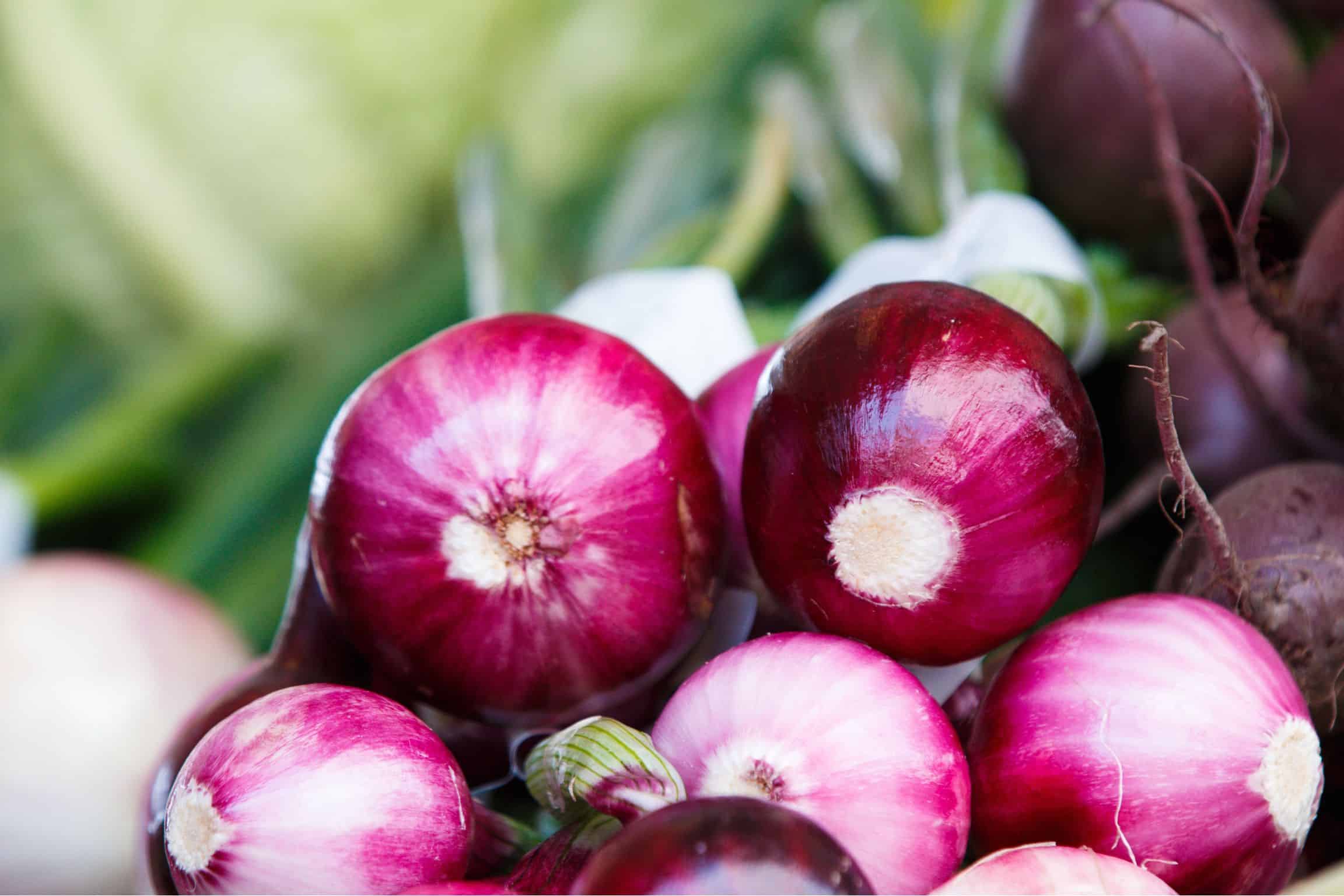
Legumes (Peas, Beans + Hairy Vetch): Turnips, meet your new “besties,” peas and beans! Consider companion planting turnips at the base of these nitrogen fixing plants to give your turnips a boost! Rotating turnips and peas is also good practice. Turnips have different root depth than peas and beans, making them great neighbors. These include bush beans, pole beans, green beans and peas. Hairy vetch is used as a cover crop, adding nitrogen to soil, repelling aphids, and reducing soil erosion. As an added bonus, the flowering annual attracts many beautiful pollinators to the garden.

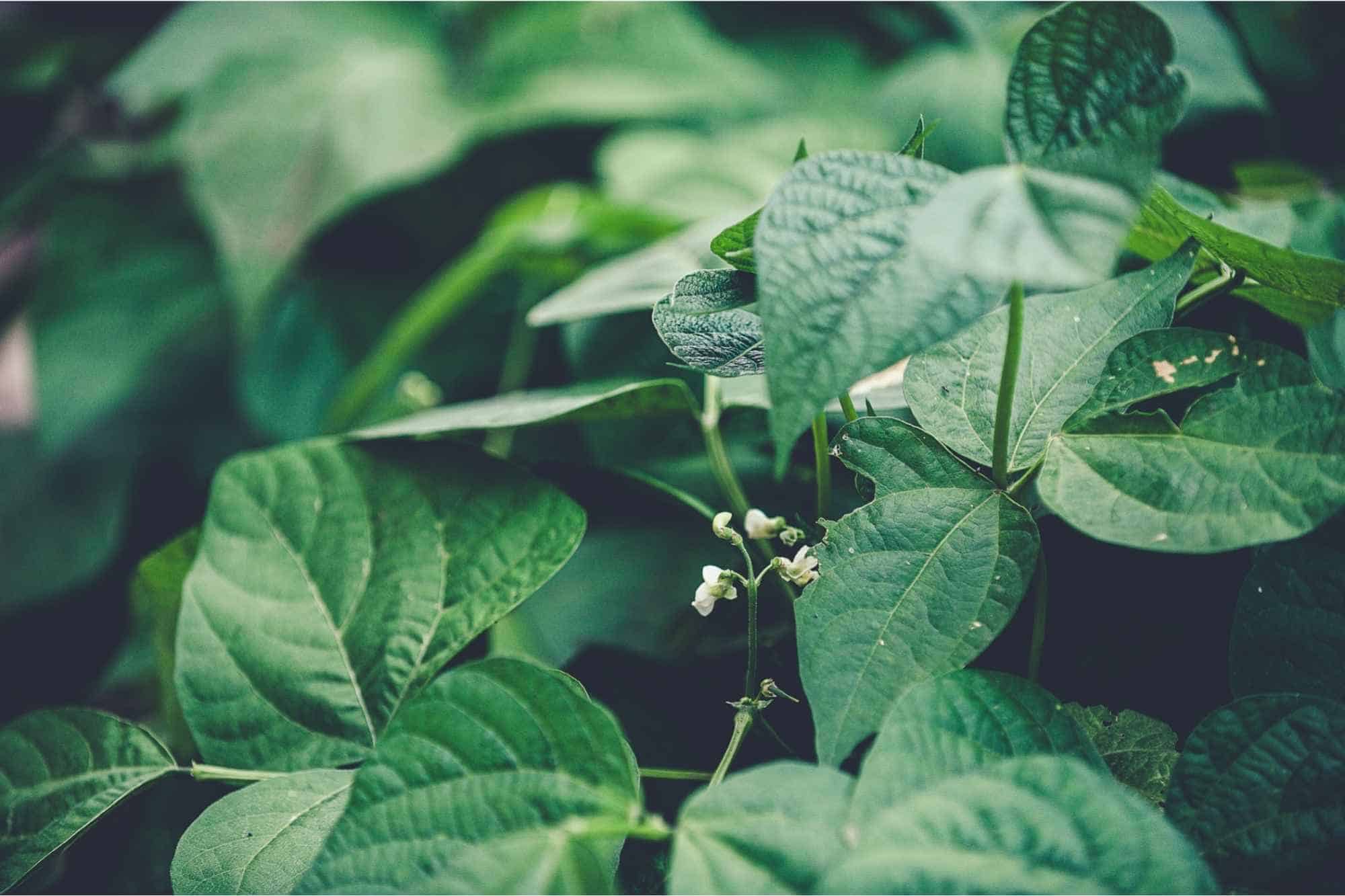
Marigolds and Nasturtiums: Nasturtiums make good companions for turnips for several reasons. They act as a living mulch, retaining moisture, steadying soil temperatures, and reducing weeds. The bright blooms of both marigolds and nasturtiums attract bees, butterflies, parasitic wasps, and hoverflies. Lastly, much like aromatic herbs, nasturtiums and marigold have a strong scent that repels pests.
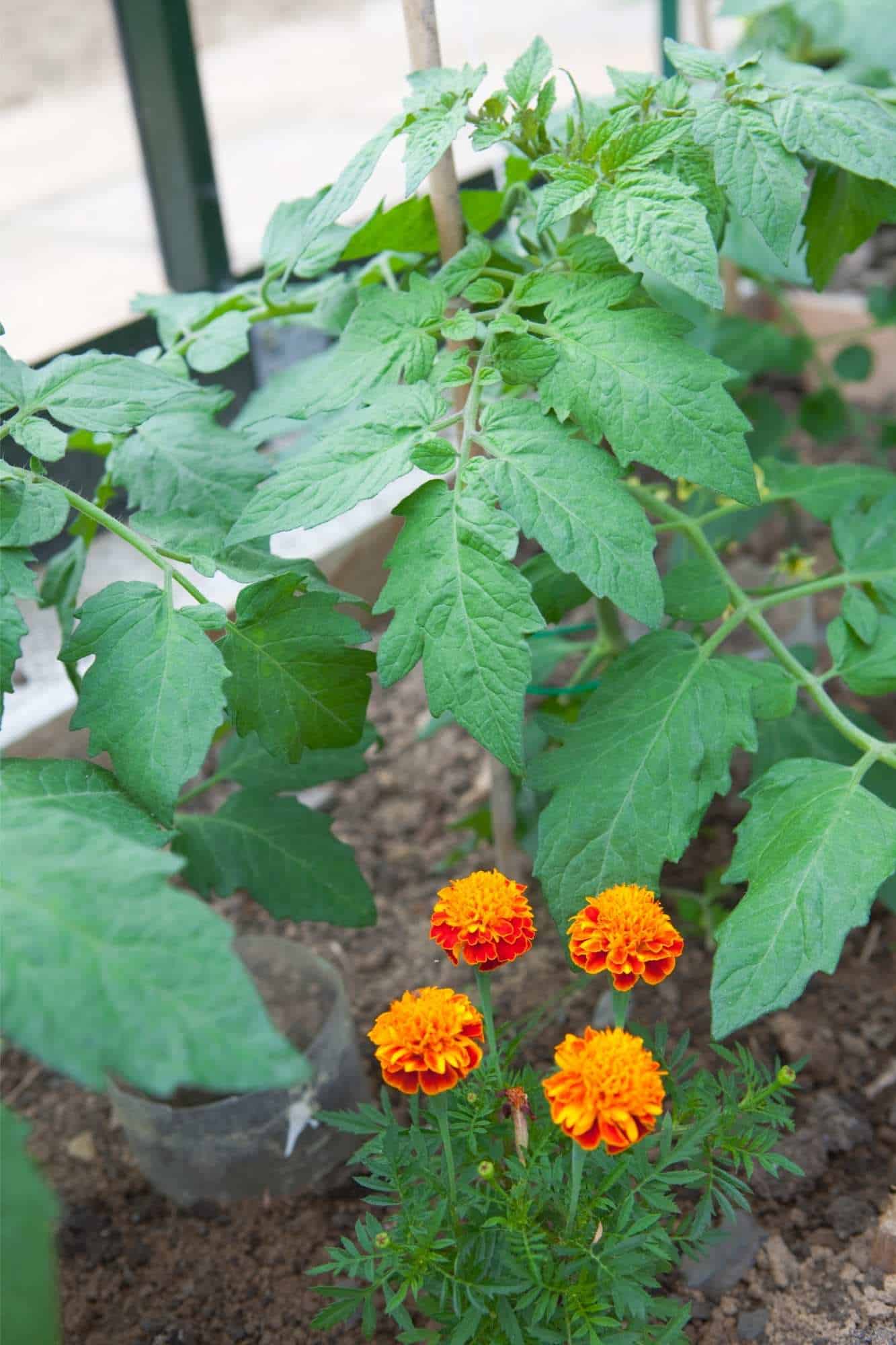

Aromatic Herbs: Rabbits, deer and other small critters LOVE turnips. Fend them off by planting strong smelling herbs that are off-putting including rosemary, sage, borage, dill, basil, thyme, and all varieties of mint including peppermint, spearmint, and cat mint (cat nip). As a bonus, the flowering herbs attract beneficial pollinators, parasitic wasps, ladybugs, lacewings, and garden beetles.



Related: Dill Companion Plants
What NOT To Grow With Turnips (Bad Turnip Companion Plants)
There are some plants that can have a negative impact on its growth and development. Some of the bad turnip companion plants include:
Certain Root Crops: Certain root crops such as parsnips, potatoes and beets are all starch storing and water hungry plants. They compete for nutrients and water and can stunt turnip growth making them bad turnip companion plants.
Horseradish: Horseradish and turnips share the same pests, making them bad neighbors. When one is plucked, the insects will move over to the next crop.
Hedge Mustard: Hedge mustard belongs to the same family and attracts mass amounts of cabbage flies.
Knotweed: Knotweeds are super invasive and can choke out and be detrimental to turnip…competing for space, nutrients, and sunlight.
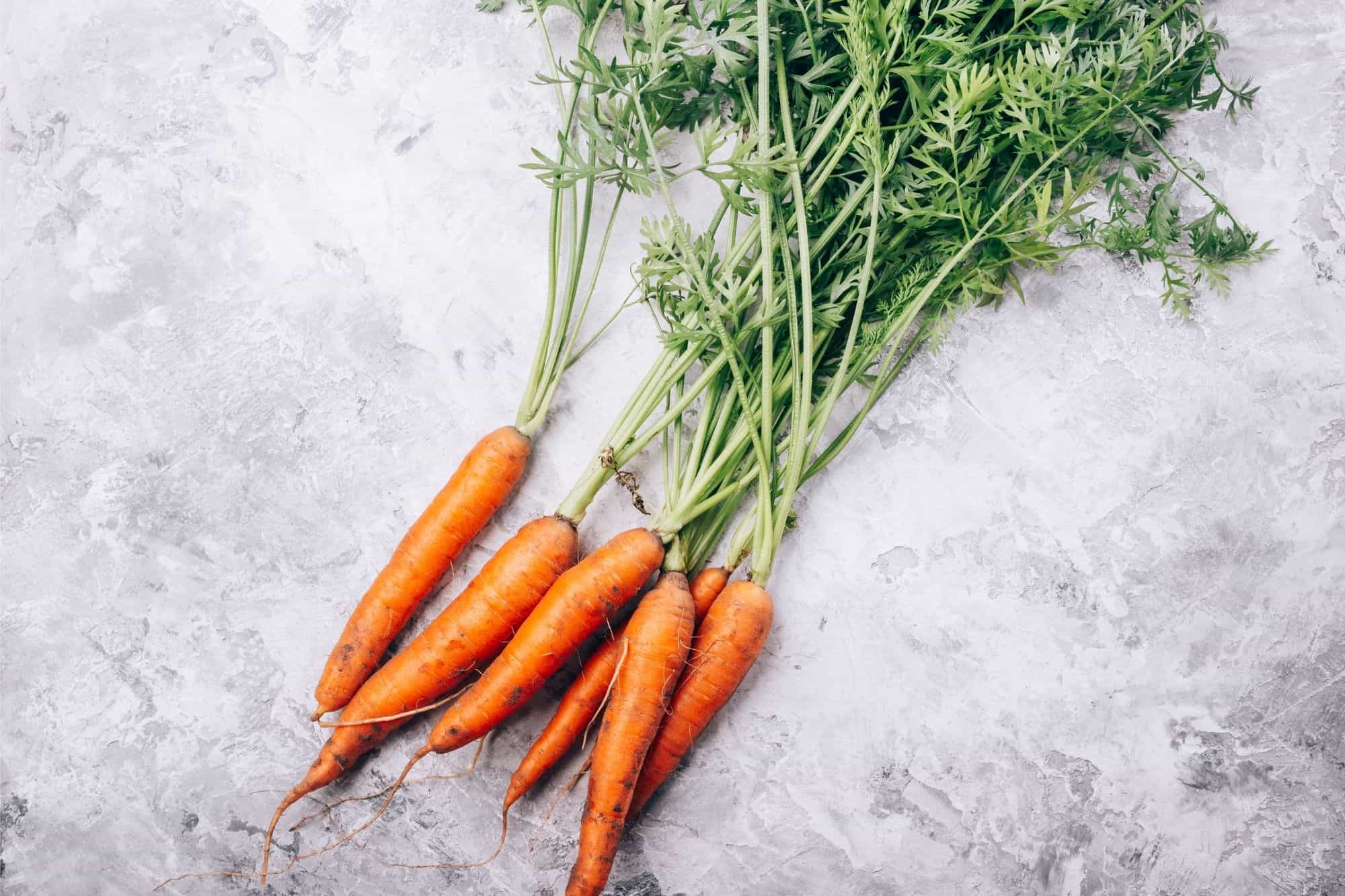
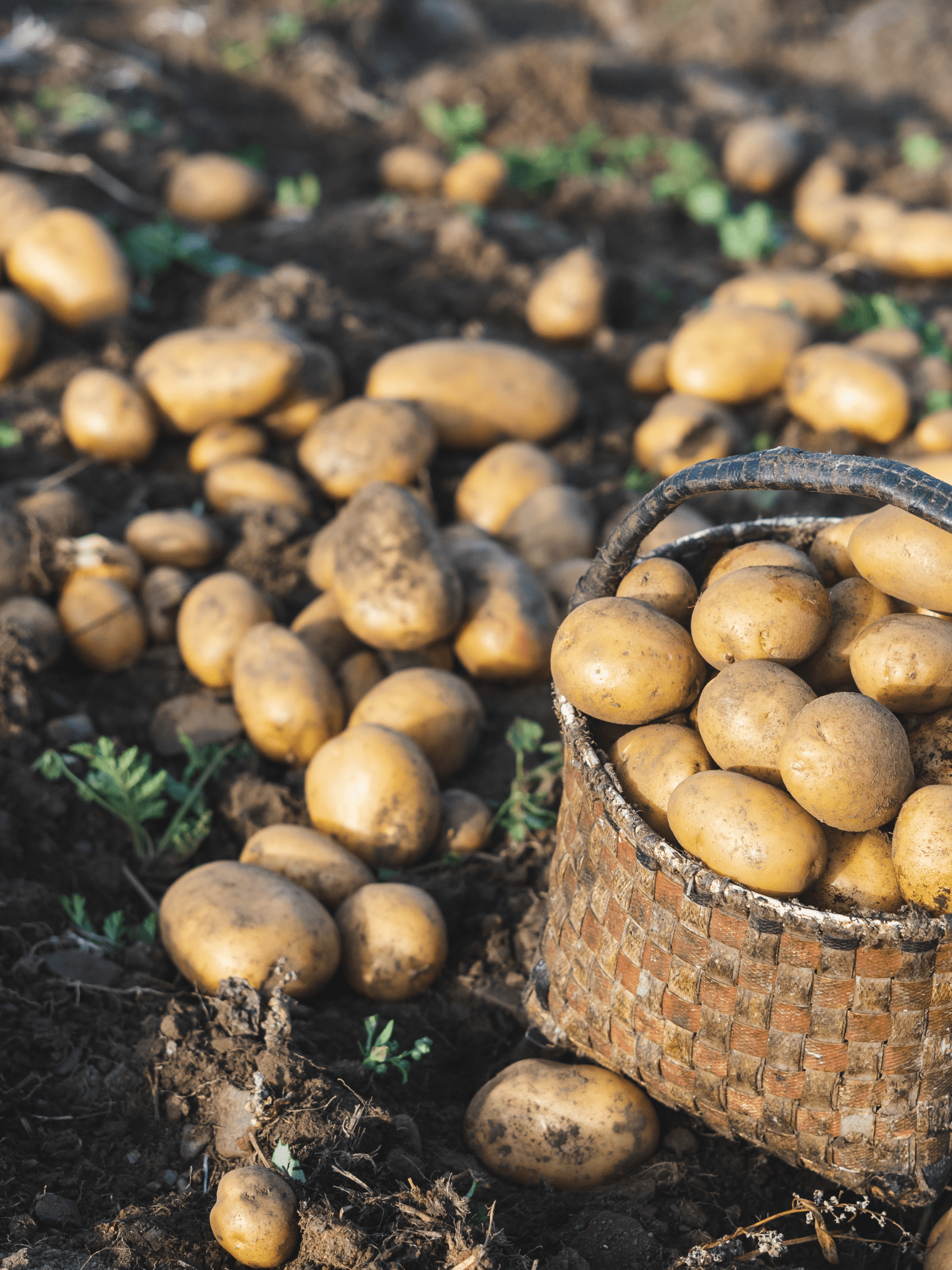
Frequently Asked Questions About Planting Turnips
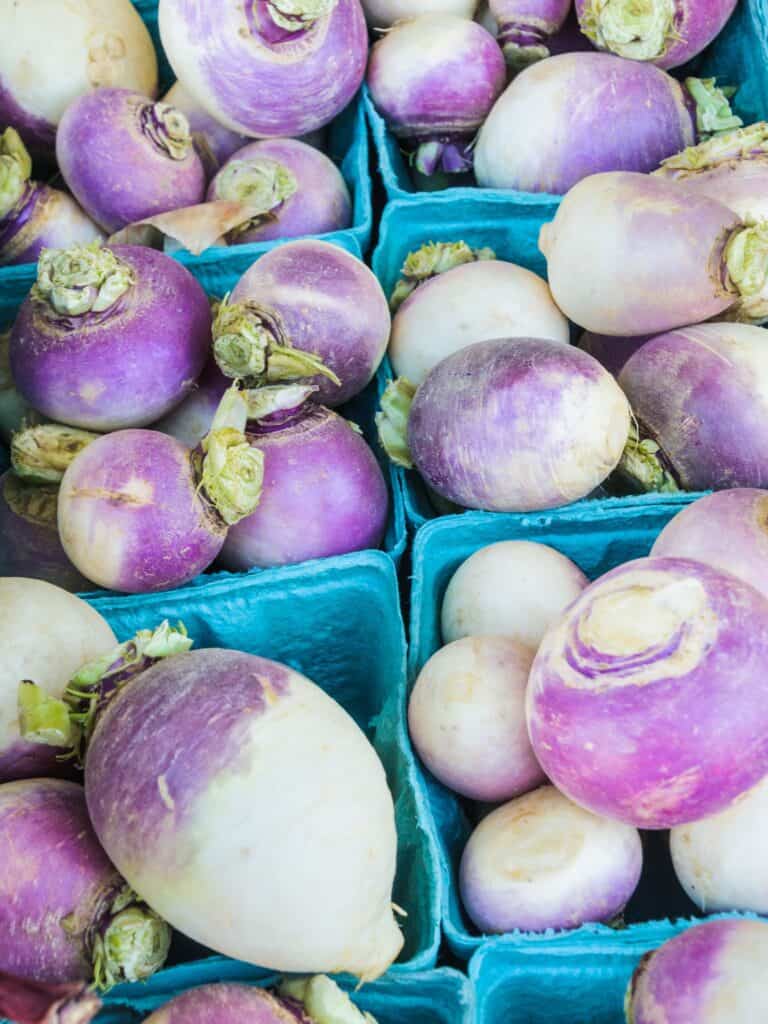
Carrots are not on the list of turnip companion plants! Turnips and carrots are both root vegetables and both have similar pests and will compete for nutrients. Avoid planting them together.
Turnips can be succession planted. In the spring, plant turnips once the soil temperature has reached 40°F.. they thrive on early planting and cool temperatures. For fall harvests, plant turnips 4-6 weeks before the last frost date (late summer).
Turnips need full sun but thrive on cooler temperatures. In the heat of the summer, turnips will wilt and suffer.
Turnip Recipes Ready For Harvest Time
Roasted Turnips: Roasted turnips are an easy classic that can be roasted with other vegetables for the perfect side dish.
Turnips with Garlicky Breadcrumbs and Parmesan: Tender and flavorful, these fancy turnips are actually a breeze to make.
Turnip Dip: This recipe uses turnip tops to create a spinach-like dip. Such an inventive way to use all of the pieces of your turnip. Check out this Edible Vegetable Tops post for other delicious produce-saving recipes!
Turnip Companion Planting Printable Guide
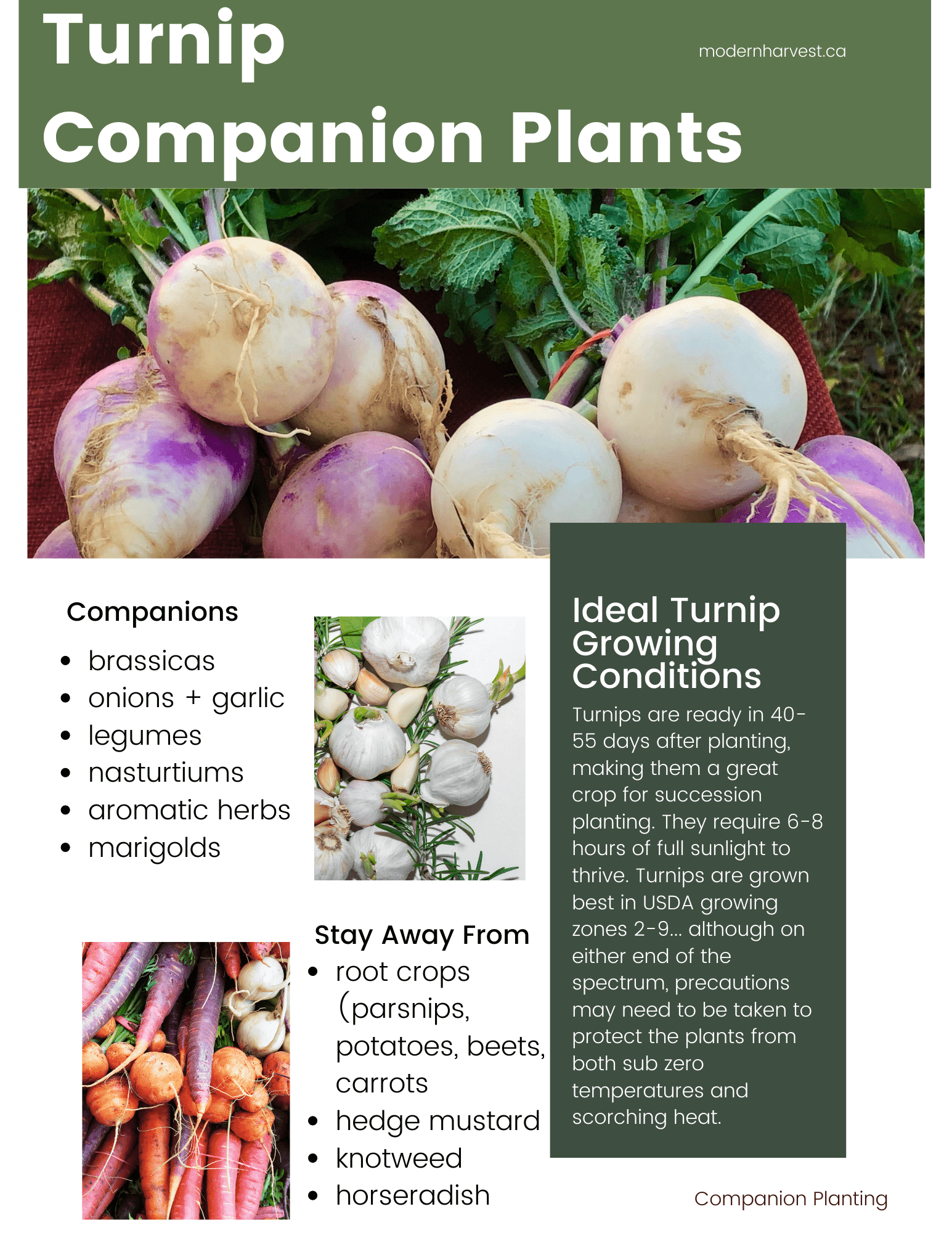
Pin It!
